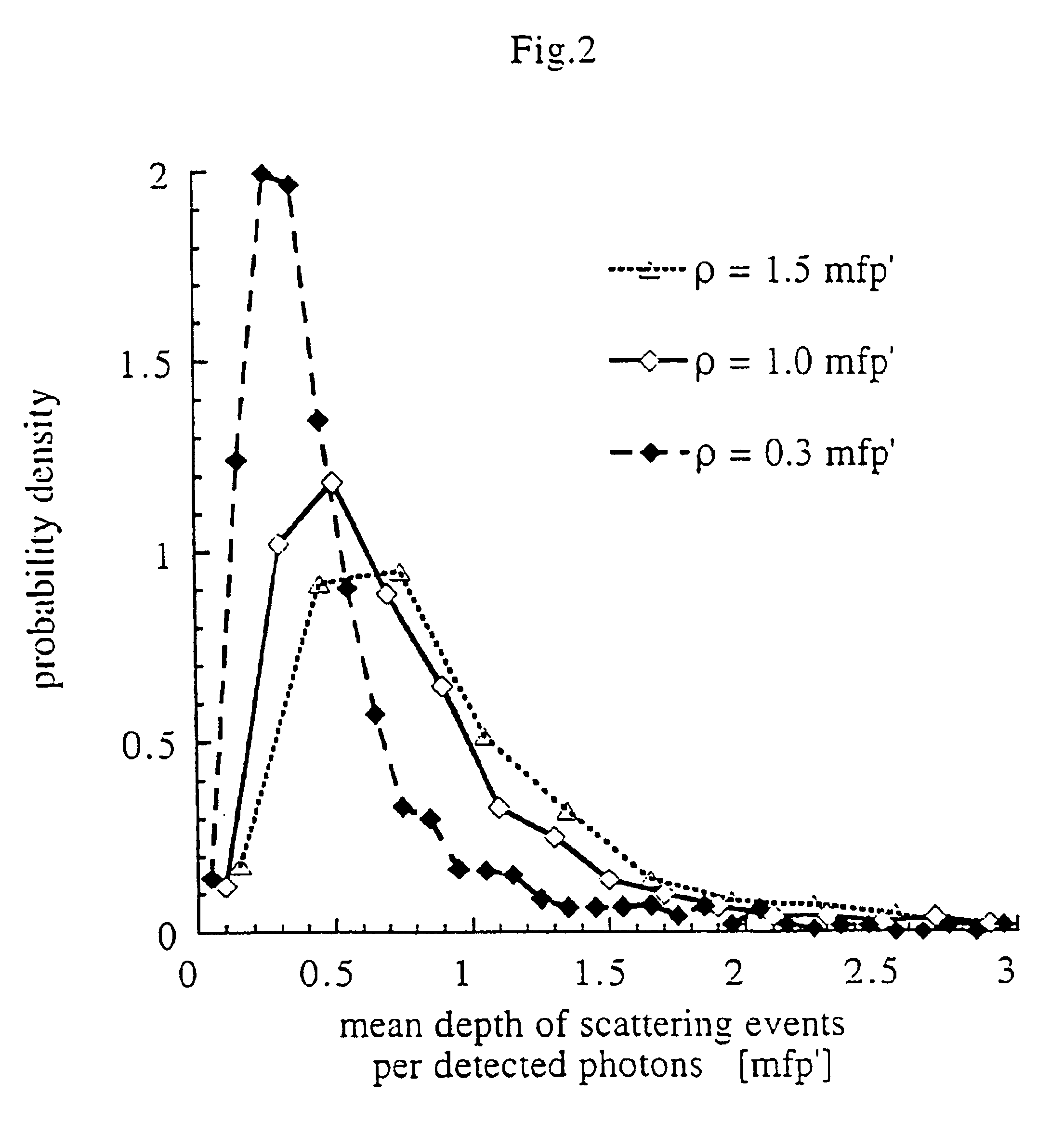Method and apparatus for measuring locally and superficially the scattering and absorption properties of turbid media
a technology of absorption properties and local and superficial measurement, which is applied in the direction of distance measurement, instruments, optical elements, etc., can solve the problem that none of the above-mentioned absorption properties can be determined simultaneously
- Summary
- Abstract
- Description
- Claims
- Application Information
AI Technical Summary
Benefits of technology
Problems solved by technology
Method used
Image
Examples
first embodiment
In the first embodiment, the apparatus can be divided in three parts, described in FIG. 5a.
The first part is the illuminating system. Any light source can be used. For example: a) white sources, such as halogen or xenon lights, metal halides or fluorescent or phosphorescent sources; b) sources such as lasers, laser diodes, optical fiber lasers, light emitting diodes or superluminescent diodes; c) the sources described in points a) and b) where monochromators, filters or interference filters are added to select a given set of wavelengths.
In the first preferred embodiment, the light power is conducted to the investigated sample by the probe, which is the second part of the apparatus. The probe is preferably made of optical fibers, to illuminate and to collect the backscattered light. But GRIN rods or other types of light pipes can also be used. Different possible arrangements of optical fibers are illustrated in FIG. 6. Two different modes of measurements can be chosen. First, one fi...
third embodiment
Spatial images of the parameters μa, μs′ and γ can be obtained by a series of measurements at different locations, that we call multi-site measurements. Some mechanical or optical scanning device can be used for this purpose. The resolution of such images is on the order of the mean source-detector separation used for a single site measurement. All three embodiments can be expanded to perform multi-site measurements, by duplicating and / or multiplexing the illuminating or measuring devices. For example, the optical fiber probes shown in FIG. 6, can be duplicated and put side by side. The scanning system described in the third embodiment can also be expanded to perform multi-site measurements.
4. Normalization and Calibration
The differences of transmission between each fiber are corrected by performing a measurement on a turbid phantom illuminated uniformly.
The background light, measured with the light source turned off, must be subtracted from the signal.
In order to perform absolute i...
PUM
| Property | Measurement | Unit |
|---|---|---|
| distance | aaaaa | aaaaa |
| distances | aaaaa | aaaaa |
| depth | aaaaa | aaaaa |
Abstract
Description
Claims
Application Information
 Login to View More
Login to View More - R&D
- Intellectual Property
- Life Sciences
- Materials
- Tech Scout
- Unparalleled Data Quality
- Higher Quality Content
- 60% Fewer Hallucinations
Browse by: Latest US Patents, China's latest patents, Technical Efficacy Thesaurus, Application Domain, Technology Topic, Popular Technical Reports.
© 2025 PatSnap. All rights reserved.Legal|Privacy policy|Modern Slavery Act Transparency Statement|Sitemap|About US| Contact US: help@patsnap.com



